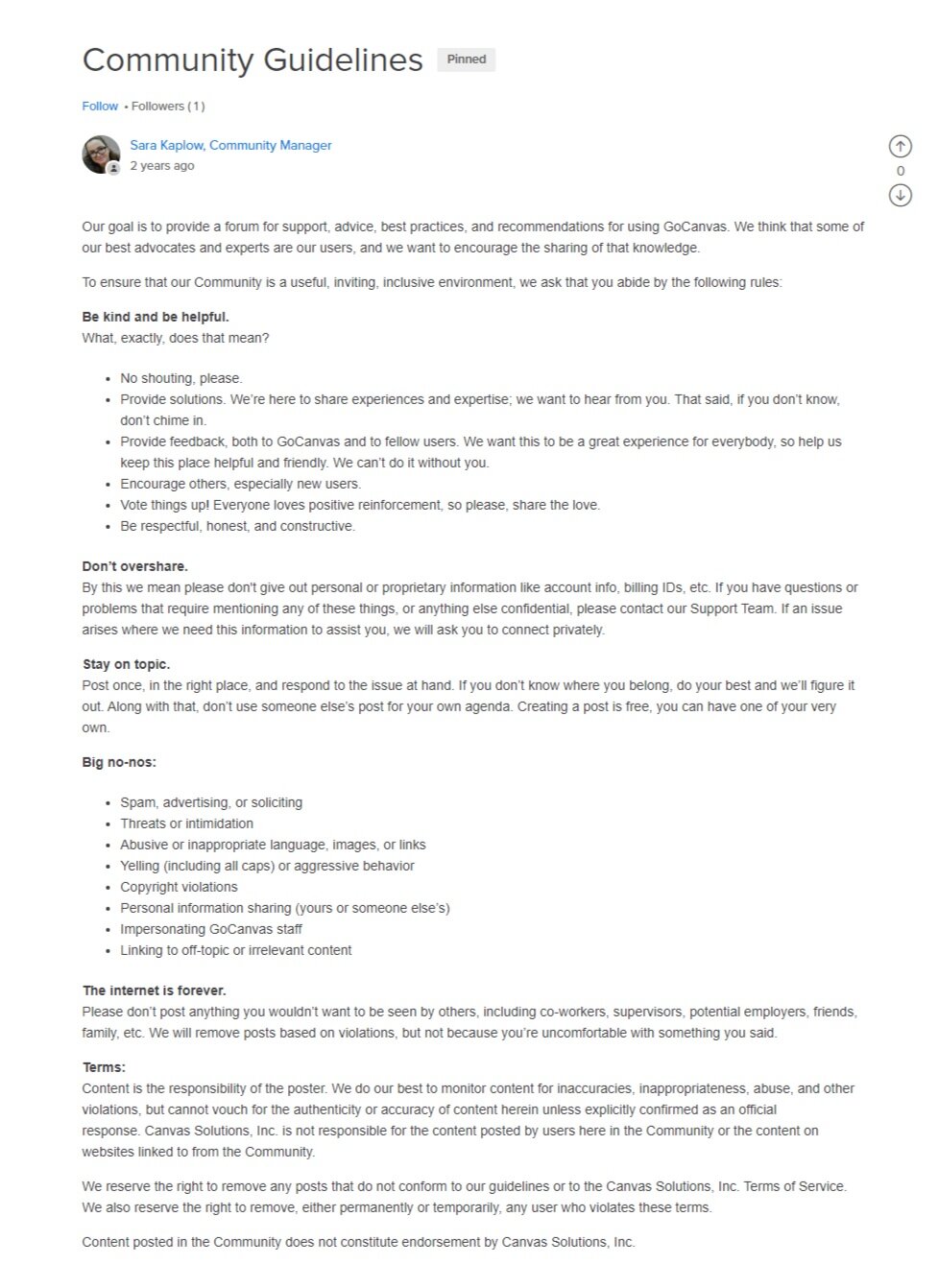GoCanvas Community strategy & implementation.
I joined GoCanvas specifically to take on running the Help Center and launching the GoCanvas Community. With an expanding user base and a complex product, the idea was to take some of the burden off of the front line staff and allow our dedicated users the opportunity to help each other out. It made a tremendous amount of sense for this product in particular, as it’s highly flexible, solves a lot of similar use cases across a ton of industries, and has a strong core of users who have become experts at solving problems with it.
The Product Team had already decided to use Zendesk as the platform for both pieces, and, while it wasn’t yet live, help content had already been migrated. No designs had been completed or approved, IA did not exist, and nothing had been configured for use. There was also a decent amount of development to be done to configure SSO between the GoCanvas site and Zendesk.
While engineering worked on that piece, I worked with the UX/UI team on finalizing designs for the landing pages, topic pages, and individual post pages. After auditing the existing help content and getting to know the product better, I did my own card sort to establish the topics for both the Help Center and Community. I validated my choices by surveying Customer Success and Support Team members to make sure that what I was assuming aligned with how customers thought about the product.
There was a mountain of small tasks and decisions that had to be made in order to launch, and much of what I spent time on was project management to keep everything going at the right pace to line up with when engineering would be ready. I was pretty much on my own, creating internal documentation to encourage customer-facing teams to point customers in my direction, writing community guidelines, planning (and begging) for marketing efforts, and building a backlog of content ideas.
Though no one was asking for it (surprisingly), I also built my own metrics and tracking plan so that we would know what success looked like. I’ve never been asked for reporting, but to this day, it’s all there. My first efforts were time consuming and low tech; Zendesk really doesn’t give you much tracking in the guide portion of their product, so I was manually recording new active users, pulling reports out of Google Analytics, and putting them all through a series of Google Sheets to show our growth. Later, I found a tool that gave me access to their API, which allowed me to pull much more – and more accurate – information (Zendesk only showed extremely active behavior in their backend, so if users were only voting on things but never commenting or posting, I’d never know it). I was able to plug that information into GoCanvas’s own analytics tool to generate charts and graphs and have accurate numbers to be able to take to product managers.
One of the most impressive and useful roles that the Community has played since launching in January 2018 is that of voice of the customer in product roadmap discussions. Starting fairly early on, even with the original shoddy numbers, I was able to take real data about what customers wanted to roadmap sessions. Every quarter, I tallied and analyzed the data, trying to bring trends and groundswells to the team, as opposed to one-off small requests. Every quarter, at least one feature from the Community would be rolled out and customers were able to share in the delight of having something made just for them. Features like static image, multi-photo upload, save to cloud, and more made it to release because of the constant pressure and guidance of the Community users.
To date, there are more 1,300 active users who have taken more than 11,200 actions. Of non-feature request posts (that is, people who are trying to solve a problem, not asking for something new), 95% have been completed or answered. Our most active user has engaged with the platform over 1,800 times (either votes, posts, comments, or subscriptions). It’s a lively, respectful group of amazing customers who give their time freely to making the product better and helping each other out. You couldn’t ask for a better customer base, and it would be hard to find one if you tried.
Miscellaneous artifacts.





